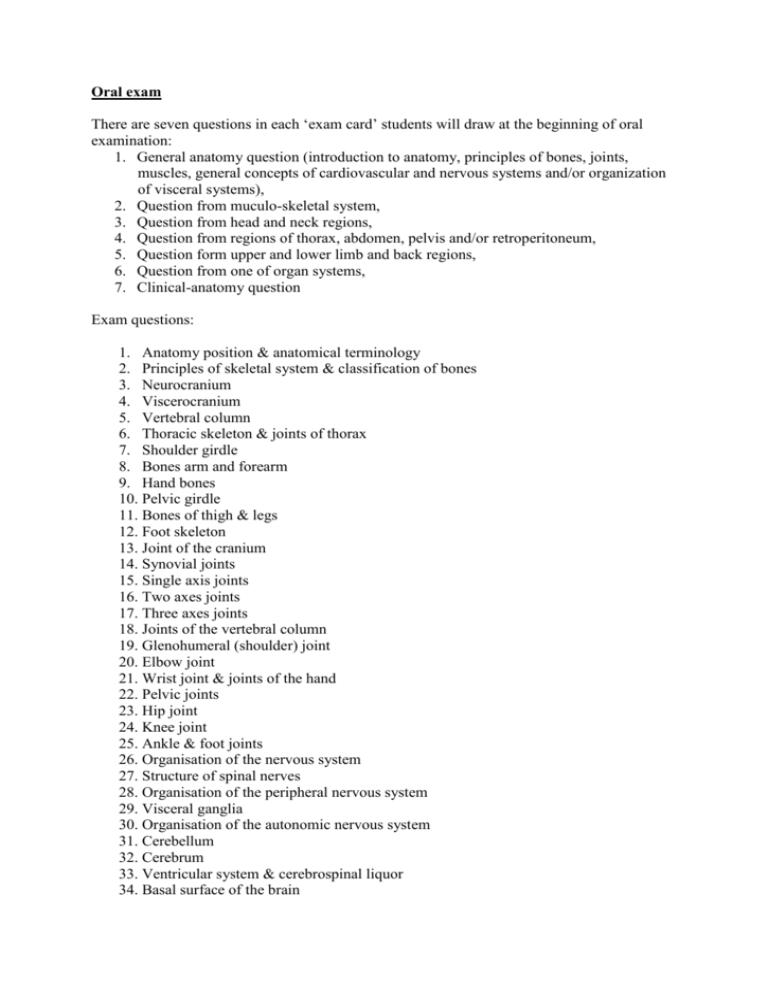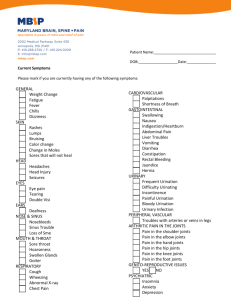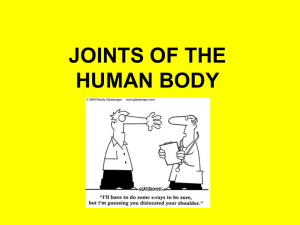Oral exam
advertisement

Oral exam There are seven questions in each ‘exam card’ students will draw at the beginning of oral examination: 1. General anatomy question (introduction to anatomy, principles of bones, joints, muscles, general concepts of cardiovascular and nervous systems and/or organization of visceral systems), 2. Question from muculo-skeletal system, 3. Question from head and neck regions, 4. Question from regions of thorax, abdomen, pelvis and/or retroperitoneum, 5. Question form upper and lower limb and back regions, 6. Question from one of organ systems, 7. Clinical-anatomy question Exam questions: 1. Anatomy position & anatomical terminology 2. Principles of skeletal system & classification of bones 3. Neurocranium 4. Viscerocranium 5. Vertebral column 6. Thoracic skeleton & joints of thorax 7. Shoulder girdle 8. Bones arm and forearm 9. Hand bones 10. Pelvic girdle 11. Bones of thigh & legs 12. Foot skeleton 13. Joint of the cranium 14. Synovial joints 15. Single axis joints 16. Two axes joints 17. Three axes joints 18. Joints of the vertebral column 19. Glenohumeral (shoulder) joint 20. Elbow joint 21. Wrist joint & joints of the hand 22. Pelvic joints 23. Hip joint 24. Knee joint 25. Ankle & foot joints 26. Organisation of the nervous system 27. Structure of spinal nerves 28. Organisation of the peripheral nervous system 29. Visceral ganglia 30. Organisation of the autonomic nervous system 31. Cerebellum 32. Cerebrum 33. Ventricular system & cerebrospinal liquor 34. Basal surface of the brain 35. Cranial nerve nuclei 36. Paresis of facial nerve 37. Lumbar punction 38. Differences between solid and hollow organs 39. Organisation of thoracic walls & cavity 40. Lungs 41. Projections of lungs and pleura to thoracic walls 42. Diaphragm & mechanic of respiration 43. Structure & function of blood vessels 44. Lymph vessels 45. Systemic & pulmonary circulation 46. Fetal circulation 47. Heart 48. Ventricles of the heart 49. Auscultation of the heart valves 50. Hemorrhoids 51. Venous varicosities 52. Intra-muscular injections 53. Deep venous thrombosis 54. Palpation of arteries of upper limb 55. Palpation of arteries of lower limb 56. Stomach 57. Duodenum & pancreas 58. Liver & biliary system 59. Small intestine 60. Large intestine 61. Portal venous system & anastomoses 62. Organisation of abdominal wall 63. Projection of the liver 64. Projection of the spleen 65. Projection of organs of digestive system 66. Inguinal herniae 67. Adrenal (suprarenal) glands 68. Kidney 69. Urinary bladder 70. Female internal reproductive organs 71. Male internal reproductive organs 72. Organisation of pelvic peritoneal cavity & excavations 73. Scalp & face 74. Orbital region 75. Parotideomasseteric region 76. Retromandibular region 77. Infratemporal region 78. Pterygopalatine fossa 79. Temporal region 80. Tympanic cavity 81. Oral cavity 82. Nasal cavity 83. Paranasal sinuses 84. Submandibular trigone 85. Carotid region 86. Anterior neck region 87. Lateral neck region 88. Thoracic cavity 89. Pectoral region 90. Thoracic cavity 91. Mediastinum 92. Inguinal region 93. Peritoneum and mesentery 94. Omental bursa 95. Secondary peritoneum 96. Supracolic peritoneal spaces 97. Infracolid peritoneal spaces 98. Retroperitoneum 99. Female pelvis 100. Perineum 101. Urogenital triangle 102. Brachial region 103. Cubital fossa 104. Anterior carpal region 105. Posterior carpal region 106. Thenar and hypothenar 107. Axillar region 108. Back regions 109. Gluteal region 110. Femoral region 111. Femoral triangle 112. Adductor canal 113. Popliteal fossa 114. Anterior leg region 115. Posterior leg region 116. Foot regions







